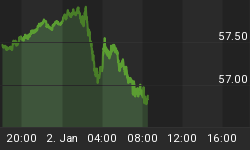About four years ago, analysts at Moody’s warned about the dangers of selling leveraged loans to American retail investors. No one listened.
Leveraged loans are syndicated loans made to companies lower on the credit scale. Investors tend to gravitate towards them like moth to a light when times are good due to the lure of higher yields and floating interest rates, which help them escape the negative effects of rising interest rates.
The leveraged loan market is one corner of the vast credit market that has continued to thrive in the midst of rising interest rates. The U.S. leveraged loan market has now hit the $1.36 trillion in asset mark with nearly a fifth of that in the hands of individual investors. That makes the market bigger than the high-yield bond market.
Leveraged loans are frequently used by companies to finance leveraged buyouts. Global M&A activity recently hit a 17-year-high due to mega deals in the U.S. healthcare sector, so that is definitely playing a part in fueling the craze.
But that’s only part of the narrative.
John Fraser, head of credit management at Investcorp, says that demand for such loans is usually high during the latter half of the business cycle, suggesting that companies might be tapping them for normal operations, not just for corporate buyouts. After all, the current yield of around 1.5 percent is still manageable for many companies hunting for cheap cash.
Low Liquidity
From an investor perspective, the returns are hard to ignore. High-yield loans have returned an average of nearly two percent so far this year, easily outperforming equities, investment-grade bonds and even junk bonds--especially during the first half of the year when many asset classes posted negative returns. Related: Wall Street Banks Fined $500M For Gaming The System
But maybe that’s where their attractions end. Much of everything else about these loans suggests that they are not meant for the faint-hearted—opaque markets, non-public and, worst of all, highly illiquid.
It takes much longer to complete a leveraged-loan trade than to settle a mutual-fund or ETF trade, with median settlement times of T+11 for on par trades. In other words, settlement is done an average of 11 business days after date of transaction. Compare that to settlement times of T+2 for all stocks and mutual funds or a maximum of T+3 for some bonds and money market funds.
Long settlement times can of course be disastrous during periods of high market stress when investors are trying to get out like yesterday.
The big problem with using liquid open-ended instruments like mutual funds and ETFs to invest in illiquid assets by retail investors, however, is not the long settlement times per se, but mainly because of the risk of a negative feedback loop that can develop during market selloffs where a vicious cycle of withdrawals begets even more withdraws. This can lead to a fire sale such as what happened in 2008 when bank loans traded at 50 cents on the dollar or more recently when UK open-ended property sold off during Brexit.
Mind you, the settlement time of T+11 indicated here is an improvement compared to the situation two years ago when it took an average of 19 days.
Thankfully, industry operators have been working hard to lower settlement times, with 34 percent of February and March trades managing to get settled within T+7. Still, investors who are attracted to the high yields of leveraged loans should be fully aware of the attendant risks.
By Alex Kimani for Safehaven.com
More Top Reads From Safehaven.com:

















